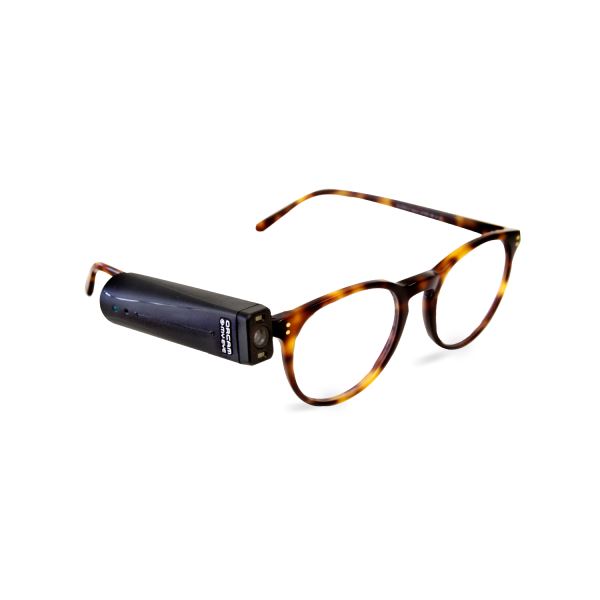Mobility Aids for Visually Impaired Users: Enhancing Independence and Navigation
Mobility Aids for Visually Impaired Users: Enhancing Independence and Navigation
Blog Article
Discover Advanced Assistive Instruments for Individuals With Visual Problems
The landscape of assistive innovation for people with visual impairments is advancing swiftly, offering a variety of ingenious tools that boost freedom and interaction. From smart glasses that perfectly combine aesthetic input with acoustic support to sophisticated navigation applications that redefine spatial understanding, these devices are reshaping possibilities.
Smart Glasses Innovations
Smart glasses represent a considerable improvement in assistive innovation for individuals with aesthetic impairments. Equipped with video cameras and sensors, wise glasses can catch real-time aesthetic information, which is after that processed and shared to the user with sound comments or haptic feelings.
In addition, advancements in man-made knowledge have actually even more improved the abilities of smart glasses. Artificial intelligence algorithms can acknowledge faces, checked out message, and identify objects, making them vital tools for day-to-day jobs. Customers can receive auditory signs that give context concerning their environment, cultivating freedom and self-confidence.
Additionally, the ergonomic design and lightweight nature of several wise glasses make them suitable for extended use, ensuring convenience while boosting capability. As these devices remain to progress, they hold the prospective to change the method individuals with visual problems experience their day-to-days live, bridging the gap between accessibility and innovation. The continuous r & d in this area assurance to expand the opportunities for wise glasses, making them a necessary component of modern-day assistive gadgets.
Navigating Application and Equipment
Various navigation applications and tools have actually become vital resources for people with aesthetic problems, substantially boosting their capacity to go across unknown settings. These modern technologies utilize general practitioner capability, audio hints, and real-time data to offer customers with accurate navigation aid.
One noticeable example is the Aira application, which attaches users to experienced agents that can give visual descriptions of surroundings and navigation assistance via a live video clip feed. This service boosts the user's spatial understanding and self-confidence while navigating. An additional significant tool is Seeing Eye GPS, which provides voice-guided navigation and sights, allowing users to gain access to vital info regarding their environments.

As technology continues to breakthrough, the development of extra advanced navigation devices promises to more encourage people with aesthetic disabilities, promoting smooth flexibility and assimilation right into varied environments. Such advancements are critical in advertising an extra inclusive society.
Braille Innovation Improvements
Over the last few years, innovations in Braille innovation have dramatically changed how people with aesthetic disabilities accessibility details and engage with the globe around them. The advancement of portable Braille displays has actually revolutionized reading by permitting customers to connect wirelessly to computers, smartphones, and tablets. These gadgets transform text right into Braille in real-time, allowing seamless interaction with digital web content.
Moreover, cutting-edge Braille printers have actually emerged, boosting the production of tactile materials. Modern embossers are quicker and more effective, enabling the fast production of Braille records and instructional materials. This effectiveness lowers the time and cost connected with generating Braille sources, making them much more available to schools and companies.
Additionally, the assimilation of Braille with other modern technologies, such as expert system and artificial intelligence, has actually opened up brand-new opportunities for personalized discovering experiences. Voice recognition and synthesis modern technologies can complement Braille, offering a comprehensive technique to info circulation.
As the need for inclusive education and learning and workplace environments grows, these technological innovations play a vital function in encouraging people with aesthetic disabilities, ensuring they have equivalent accessibility to info and possibilities in various facets of life.
Wearable Gadgets for Self-reliance
An expanding selection of wearable tools is improving self-reliance for people with aesthetic disabilities, supplying ingenious services that improve navigation and daily living. Braille displays and notetakers. These gadgets make use of advanced innovations to provide real-time comments and support, promoting freedom in different atmospheres

Wearable modern technology likewise includes smartwatches that can be configured with availability functions, allowing individuals to obtain notifications, track their locations, and even call for support with the touch of a button. Some devices include man-made knowledge to evaluate the environment, offering audio summaries of neighboring items or people.
Voice-Activated Assistive Solutions
Leveraging voice-activated assistive solutions has actually changed the landscape of assistance for individuals with aesthetic disabilities, giving hands-free interaction and access to a selection of jobs. These technologies use natural language handling and expert system to allow users to carry out day-to-day activities with straightforward voice commands.

Moreover, current advancements in voice recognition accuracy have boosted the individual experience significantly, suiting diverse accents and speech patterns. This inclusivity makes certain that even more people can gain from these innovations, fostering a greater feeling of autonomy.
Final Thought
In conclusion, the advancement of advanced assistive tools considerably boosts the freedom and lifestyle for individuals with aesthetic disabilities. Innovations such as smart glasses, navigating apps, Braille technology, wearable gadgets, and voice-activated remedies jointly promote an even more inclusive atmosphere. These technologies empower users to browse their environments with self-confidence and engage more fully with the globe, eventually promoting greater accessibility and equivalent possibilities for people encountering visual obstacles.
The landscape of assistive modern technology for individuals with aesthetic disabilities is progressing Braille displays and notetakers quickly, presenting a variety of ingenious tools that boost autonomy and interaction.Smart glasses represent a significant improvement in assistive technology for people with visual impairments. As these gadgets continue to develop, they hold the prospective to transform the method individuals with aesthetic problems experience their day-to-day lives, linking the void between accessibility and innovation.In current years, innovations in Braille technology have considerably transformed just how people with aesthetic impairments accessibility information and involve with the globe around them. These modern technologies encourage users to navigate their environments with self-confidence and engage even more totally with the world, eventually advertising higher access and equal opportunities for individuals facing aesthetic difficulties.
Report this page